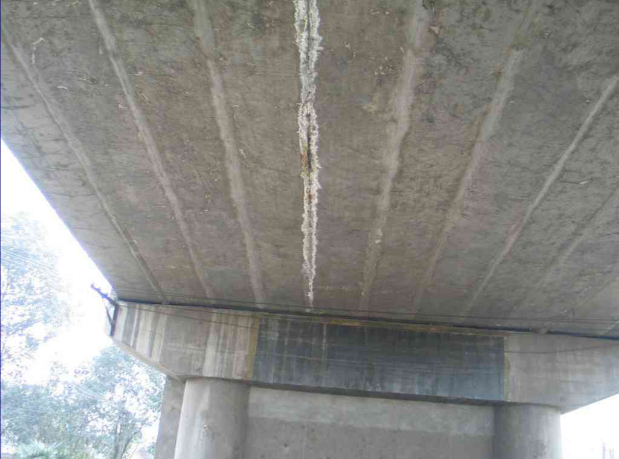Bridge Structural Reinforcement
Structural Reinforcement
In the curved beam section, we adopt the reinforcement scheme of pasting steel plates, and in the straight beam section, we adopt the reinforcement scheme of tensioning prestressed carbon fiber board.

The bridge was completed and opened to traffic in 1997, with a total length of over 4800 meters and has been in service for 18 years. Under the long-term heavy traffic, the deck pavement of Qinglongchang Interchange is seriously damaged, the beam body has a lot of cracks, the support is deformed and aging, the Expansion joint, drainage system, railings and other ancillary facilities are incomplete or invalid, and the lighting facilities are also scattered, and the lighting effect is poor.
Therefore, in order to ensure the safety and durability of the bridge structure, it is urgent to reinforce and repair the bridge.
Analysis of original bridge diseases:
Due to the design concept and limitations of the conditions at that time, the original bridge's bearing capacity was not much surplus in the design, and overloading of vehicles and transportation of large items had a negative impact on the bridge's stress;
According to the new design specifications, the stiffness of the main beam is relatively small; The 8cm thick concrete bridge deck pavement layer is too thin;
The use of small joints in hollow slabs results in poor construction quality
The construction quality of the bridge deck pavement layer is poor, and the process control is not strict
The disconnection position of guardrails and supporting steel pipes is unreasonable;
The waterproof quality of the bridge deck is poor;
Serious human damage on the bridge deck and under the bridge
Relatively lack of daily maintenance, inadequate maintenance
Key points for strengthening the original bridge:
1. Repair of defects and cracks in the entire bridge
Therefore, the design requires that before strengthening and repairing the entire bridge, the existing deficiencies should be addressed first:
Treat cracks with a width greater than 0.15mm with constant low pressure injection of modified epoxy adhesive solution, and seal cracks with a width less than 0.15mm with crack adhesive (the abandoned main bridge lane slab does not undergo crack treatment);
For steel bars with exposed rust, rust removal treatment should be carried out:
Alkali honeycomb, pitted surface, and loose or peeling alkali should be chiseled off and repaired with modified epoxy or mortar.
2. Reinforcement and reinforcement of hollow slabs
Based on the defects reflected in the inspection report and combined with the calculation and analysis results of the hollow slab, the hollow slabs at the bottom of the original bridge's 1st span, 6th to 9th span, 13th to 15th span, and 33rd span are reinforced as follows
Strengthen the joints of the hollow slab of the original bridge. In order to enhance the force transfer performance between slabs and improve the horizontal integrity of hollow slabs, the design requires chiseling and re pouring based on the actual density of small stone fragments in the grooves. At the same time, measures such as embedding "door" shaped steel bars and placing spiral bars inside the grooves are used to strengthen the grooves.
3. The scope and main content of this reinforcement include remaking the bridge deck pavement, repairing cracks in the beam body, anchoring steel plates and tensioned prestressed carbon fiber sheets at the bottom of the beam, replacing bearings, railings, street lighting facilities, and repairing the main bridge truss car.
In the curved beam section, we adopt the reinforcement plan of pasting steel plates, and in the straight beam section, we adopt the reinforcement plan of tensioning prestressed carbon fiber board. pasting steel plates at the bottom of the beam is like applying steel plates or plaster after a fracture, which suppresses the development of cracks. While tensioning prestressed carbon fiber board at the bottom of the beam, it is like that there are many tensioned Rubber band tightly attached to the bottom of the beam. When the vehicle passes again, the sag and deformation of the beam will be significantly reduced, thus strengthening the bridge structure.